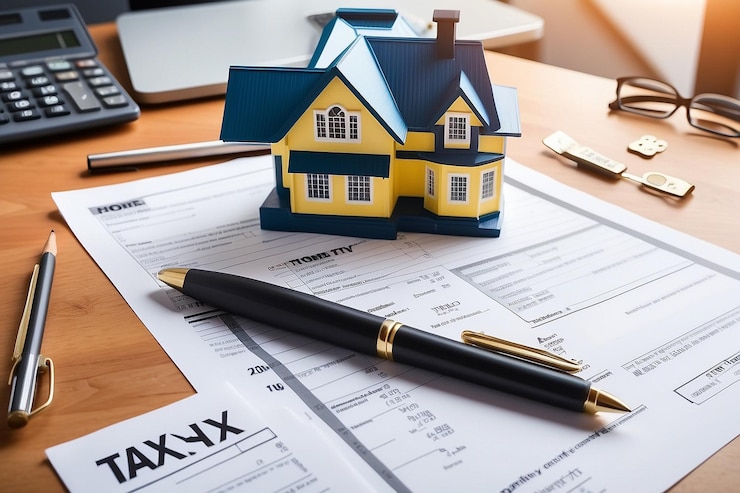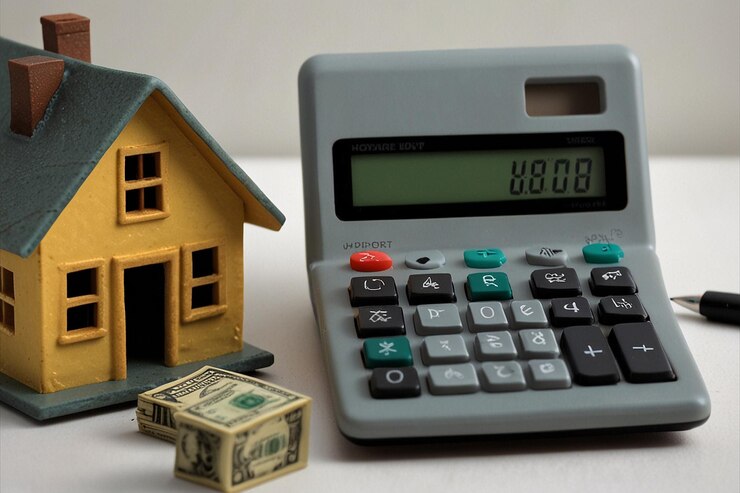For those looking forward to home purchasing in Texas, it is necessary to know the mortgage rates and get advice about what type of plan can help them save more money over time. This could affect their financial decisions here.

Although Texas shares with Oklahoma and Kansas — two other states at the very top of our list — some common climate hazards (like large cities regularly getting whacked by hurricanes, tornadoes, or often catastrophic hailstorms), there are additional factors that make insurance so costly in this state-visit here.
According to a white paper released by the Texas Office of Public Insurance Counsel, agent commissions, acquisition expenses, and advertising are 65 percent higher in Texas than the national average.
Factors like the kind of mortgage, creditworthiness lending institution, and other financial factors can influence your home loan rates.
The Texas Real Estate Market:
The largest state by area is Texas Mortgage, which covers 261800 square miles. With 29.5M inhabitants, it is the tenth most significant and second most crowded state (after California).
The Five Largest Cities in Texas Mortgage:
Houston, San Antonio, Dallas, Austin, and Fort Worth. Stay home. Between them and the rest of us is where almost all of the people in our state live. There are ten towns in America with more people than Fort Worth, three of which are Houston.
| Resource | Problem | The My First Texas Home Program provides first-time homebuyers with competitive loan rates, closing costs, and down payment assistance. |
| TDHCA-My First Texas Home Program | In Texas, HUD-approved counseling agencies offer free housing counseling to homeowners behind their mortgage payments. | To buy a home, Texans must meet local income and price constraints. |
| HUD Department | Housing and foreclosure prevention counseling. | The My First Texas Home Program provides first-time homebuyers with competitive loan rates, closing cost assistance, and down payment assistance. |
It has seen a selection of tech company duplicates flee to Austin, which conjointly explains why it became one of the highest places wherever to remain this decade once accounting for, however, home star worth growth. You have the brain of another for San Antonio, right? A home in the seventh-largest city costs around $167,700.
What loan amount do you qualify for based on your credit? How much can I expect to pay in mortgage each month? What are Your Payment Factors?
Aesthetics: How much is your house worth?
The tax you pay on your home is based upon the ability to independently calculate whether it reflects market value, as assessed by Wake County each year. The tax invoice is usually sent out in early October and should be paid by the end of January of the following year.
Nevertheless, Texas does get a high frequency of tropical storms, along with tornadoes and hailstorms, just about as often or more than other locales (albeit not all are quantified in the same way), forcing insurance rates higher beyond simply greater historical claims.
Texas Mortgage also published a white paper stating that the Texas Office of Public Insurance Counsel claims underwriting, marketing expenses, and agent commissions are 65% higher in Texas than the national average.
Find out now if you have a home ownership plan that works for your financial situation—talk to an expert! Additionally, they can assist you with investing and financial planning to provide for the future, such as retirement options, income tax return preparations, and insurance.
What Does it Cost to Buy a House in Texas?
Getting a home inspection is one of the earliest things you should do after buying. The service in Texas should cost between $200 and $450. Radon tests, mold inspections, and even termite inspections are available as additional services only (not included) that will make you spend more than your plan with a regular whole-home inspector stream.

Texas has a mortgage overseer license and also issues inspector licenses (we hope you’ll consult with your home inspecting consumer advocate regarding the educational backgrounds of these] inspectors).
What are USA Mortgage rates calculated about?
For, if you borrow $300 000 during some years, at the annual discount rate of 4%, your nominal offers (the coupon rebate) will be interest rate_. ) /12 =0.04/12=0.0033 The sum is positioned to all possible “360. “Place it inside the formula and obtain $1,432 every month.
- Principal: The whole volume of revenue you are finding in a personal loan.
- Interest rate: The interest of the principal.
- Loan Term: The number of years, typically 15 or 30, during which you would repay the loan at agreed-upon intervals.
Factors Influencing Texas Mortgage Rate:
If you have a great credit score, then this will typically translate into low mortgage rates. The money that can be charged to lenders is much better for low-risk borrowers like those with top-tier credit.
Loan Type:
How are charges per type of loan working like fixed-rate or variable-rate (ARMs), FHA, and VA loans?! Fixed rates could come with a higher initial interest rate and even 15-year mortgages!
Down Payment:
The more you put down, the less risk to the lender, and thus, potentially easier access for better rates. As a general rule, you want to aim for at least 20% down and get the best overall rate dealt with
Loan Term:
In general, 30-year loans have higher interest rates than shorter-term mortgages (for example, a 15-year mortgage is usually about four-tenths of a percentage point lower in rate). But the monthly price tag is much higher.
Location:
Local economic conditions also influence mortgage rates. Texas is a booming real estate market, and there can be different rates, as in the case of Texas.
Economic Conditions:
A million variables could influence mortgage rates, such as the pace of inflation across the nation, actions taken by the Fed, and whether job gains or losses occur.
At this point, they still must contend with factors like inflation and Federal Reserve rate hikes for Texas Mortgage rates. A Diversification Play Conversely, mortgage rates often drop when the Fed cuts rates to boost economic growth.
How to Look For Mortgage Rates in Texas:
Never take the first offer from a Lender. Terms, rates, and fees vary by lender. There are many other ways to get the best price, so shop around.
Check Out Online Payment Aggregators:
Check those websites to compare Texas mortgage rates from multiple lenders. They can give you a general idea of the market rate.
Think About Rate Locking:
So, if you see a bit of (good) rate before going into and closing this month that you think appears good up to possible for the next 30-60 days, lock it.
Texas Mortgage Rates:
Interest on these loans remains the same during repayment, so your monthly payments are predictable.
Fixed-rate mortgages are great if you’re going to live in your house for the long term and will never want a payment that can go up so much.
Adjustable rate mortgages or ARMs:
ARM rates and initial set periods may change in some cases. An Adjustable-Rate Texas Mortgage typically starts with lower initial rates than fixed-rate mortgages, which can rise over time. An ARM may be a great option for anyone who plans to sell or refinance before the rate adjustment occurs.
Jumbo Loans:
So, as compression: If you are purchasing a house that comes in at pretty spendy and want to avoid tripping over the Federal Housing Finance Agency-conforming loan limits, then apply for what is known as a jumbo mortgage or JUMBO LOAN.
Jumbo loans are a higher risk for lenders, so they usually carry higher rates, which are much pricier than regular conforming mortgages.
Government-Backed Loans:
Many lenders also provide them through a government-insured program that offers reduced interest rates for first-time homebuyers, veterans, and people buying homes in rural areas.
Ignoring Extra Expenses:
There are also some other things you should consider when considering Texas mortgage rates.

You should also budget for property taxes, homeowner’s insurance, or, if your down payment is less than 20%, private mortgage insurance (PMI).
Ignoring Points:
Some lenders may allow you to get points paid down if you are interested in a lower interest rate. However, for every point (generally equal to 1% of the loan amount) that decreases your rate, there is a cost upfront against savings down the line.
Ignoring APR:
This finance charge will contain the APR, interest rate and fees. It goes beyond the interest rate and shows what you must pay over time for your loan.
How to Get the Best Deal on a Mortgage Rate in Texas:
Once you feel secure about your income and credit score for a Texas Mortgage, be sure to pay all outside bills on time (along with monthly mortgage payment.) Higher down payment= lower interest rates as this reduces the loan-to-value ratio. So do your homework and explore what kind of loan suits you the best.
Keep an eye out for cost. Feel free to talk about pricing with reputable companies. Stay away from the Fees (The American Capitalist). Even a slight reduction in interest rates could save you several hundred dollars over the life of your loan.
In summary:
Aside from your credit score, you should consider several other variables to calculate Texas mortgage rates. You can secure the best Texas Mortgage rate by comparing lenders, types of loans offered, and web resources.
Take charge and have all the information beforehand to make the best financial choice when you are considering refinancing or purchasing your first home.











Good day! Do you know if they make any plugins to help
with SEO? I’m trying to get my website to rank for some targeted keywords but I’m not seeing very
good success. If you know of any please share.
Appreciate it! I saw similar blog here: Eco blankets